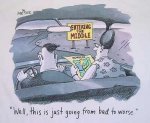Conclusion:
The purrs of the UA are a reasonably regular (within certain tolerances) 'pulse', somewhat like a heartbeat, almost as if they represent background noise of the UA itself following its morse broadcast. They are generally of the same length, with the same gap in between, and also generally are broadcast in groups of the same length - with 1 out of 5 of the groups in this test containing one more. Much more analysis of many more recordings will be required to ascertain whether this is the norm, and certainly before any further hypotheses can be formed or tested.
There appears to be no pattern to the low/high 'tones' represented by the purrs, but within each sequence of 5/6 purrs, in this recording at least, the high tones are always the same, and the low tones are always the same. Between sequences, however, the high tones differ from each other, as do the low tones.
As has been noted by the community on more than one occasion, however, this recording exhibits no sequences of 'lll' or 'hhh' - which is, perhaps, strange, given the relatively high chance of such a pattern occurring in truly random two-state patterns. This could be a factor of the underlying programming preventing 3 or more tones the same whilst still being random, or could betray an underlying order to the tones.
No real information has been obtained from the purrs themselves from this analysis, only more questions. Given the uncertainty surrounding any encoding 'scheme' used for the purrs, however, and the uncertainty surrounding a mapping between binary or morse, I feel reasonably certain that any information contained within the purrs is neither binary nor morse. Especially since, as mentioned above, the existing morse signal actually fits 'accepted' morse, by varying the lengths of the 'chitters', which is how 'standard human' morse is broadcast - it's only the tones themselves that don't fit 'standard' morse.
Any further attempt to read the purrs as morse should first start with a good answer to the question "Why would an agent already communicating in recognisable morse change to an obfuscated form of morse part-way through transmitting?"
I feel certain, however, that if there is information present in the purrs, then each individual recording of a UA should contain that information, or parts of that information - therefore it should be possible to decode it from just one recording.
If this analysis is accepted, then any further analyses on other UA recordings to gather the high/low tone 'map' should use the same parameters for identifying the 'purrs' - i.e. only including those that occur after the morse finishes and when the next honk starts since, in this recording at least, any other hidden purrs were not apparent until the audio was sped up.
As I write that final sentence I realise that this analysis might not have been possible without using the audio tool Audacity to simplify the process of identifying high/low pitches. This is completely contrary to audio presented to us as citizens of Elite Dangerous, and therefore any information or hypotheses constructed based around such analysis could be argued to be flawed at best.



